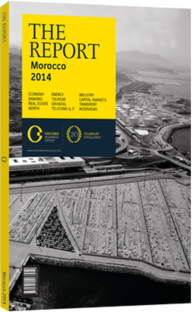Moving the masses: Improving urban transport with trams and trains
Decades of traffic congestion in Casablanca and Rabat, Morocco’s two biggest cities, have prompted a need to introduce various new forms of mass transport. Over the past three years, both cities have witnessed the opening of new tramway systems aimed at taking cars off the roads and reducing residents’ commuting times. Although the passenger numbers in both cases have exceeded expectations – Rabat’s tramway transports a daily number of 90,000 passengers, while Casablanca’s manages 100,000 – the impact on traffic thus far has been minimal.
As such, a next phase of urban transportation is under way. In Rabat, studies are ongoing on the extension of the existing infrastructure – two lines totalling 20 km and serving 31 stations – with an additional 10 km at an estimated cost of Dh800m (€71m). Works are set to start by mid-2014 and the new lines are likely to be running by the end of 2016.
In the case of Casablanca, a second tramway has been among the options considered by Casa Transport, the agency in charge of public transport in the city. However, while usage of the current line is optimal, the city requires higher-capacity modes of transport to maximise the impact. Particular areas in need of inclusion in the transportation network are Bourgogne, Maarfi, Sidi Othman, Moulay Rachid, Derb Soultan and Al Fida, which have an estimated population of 2m. As such, the city has opted for a skytrain with a daily capacity of 450,000 passengers.
By the end of 2013, the Casablanca mayor’s office confirmed that the train would indeed come, stemming scepticism resulting from earlier unsuccessful attempts to get similar projects off the ground. According to its announcements at the time, the project will run over a distance of 15 km and will cost between Dh8bn (€710.4m) and Dh9bn (€799.2m).
At present, feasibility studies are in their final stages, conducted by specialised French engineering firm Systra, and are expected for completion by mid-2014. Meanwhile, Casa Transport is preparation the tenders for the construction stage. Completion of the project is expected for 2018.
It is yet unclear how the project’s financial requirements will be met. However, the government has indicated that, similar to the city’s tramway, it will make available funding from its designated Public Transport Fund. While the state supplied Dh4bn (€355.2m) of the Dh6bn (€532.8m) for the tramway, mounting budget deficits in more recent times have raised questions as to the exact level of support the state is willing and able to provide.
Mindful of the fact that additional capacity of the skytrain will remain insufficient to serve most of Casablanca’s 5m inhabitants, the city is also planning to introduce a regional train linking the coastal city of Mohammedia to the west of Casablanca to Mohammed V Airport on the city’s southern flank. The project will be considered following the launch of works on the skytrain, but public expectations have been set following the confirmation of the project by both Office National des Chemins de Fer and Casablanca City Council officials. According to the current plans, the train, modelled after Paris Réseau Express Régional connecting the outskirts with the inner city, would run over a distance of 57 km, traversing Casablanca through a 9-km-long subterranean tunnel and linking up with at least two stations of the skytrain’s network. While studies have yet to confirm the exact financial requirements, early estimations indicated a total cost of Dh11bn (€976.8m).
The second half of the decade is likely to see a rise in investments in urban infrastructure systems in Morocco’s largest cities. With the confirmation of various high-profile plans, the private sector can look forward to a range of related supply opportunities, while the government may well indicate a need for financial support. Provided all goes to plan, the ultimate winners will be the citizens of Rabat, Casablanca and other major Moroccan cities where similar plans for urban mass transport are also taking root.
You have reached the limit of premium articles you can view for free.
Choose from the options below to purchase print or digital editions of our Reports. You can also purchase a website subscription giving you unlimited access to all of our Reports online for 12 months.
If you have already purchased this Report or have a website subscription, please login to continue.

